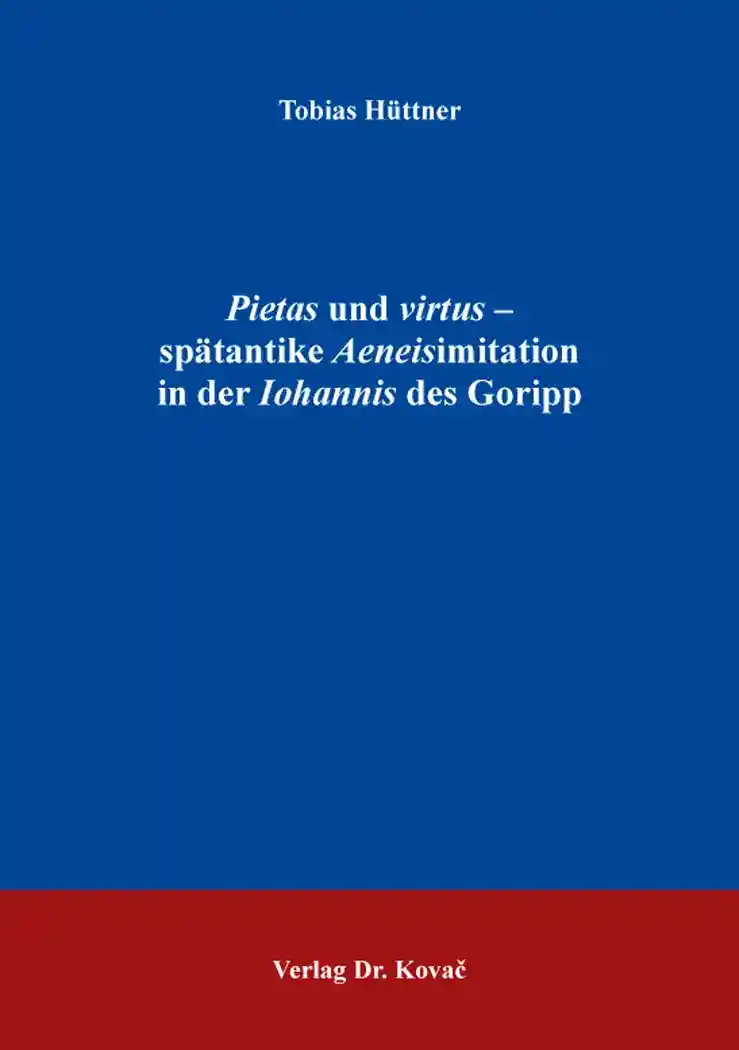Tobias HüttnerPietas und virtus – spätantike Aeneisimitation in der Iohannis des Goripp
Schriftenreihe altsprachliche Forschungsergebnisse, volume 15
Hamburg 2020, 472 pages
ISBN 978-3-339-11206-4 (print)
ISBN 978-3-339-11207-1 (eBook)
About this book deutschenglish
The Iohannis deals with the Byzantine wars, which general John Troglita led on behalf of the emperor Justinian against the Moorish Berber tribes in North Africa between the years 546 and 548 AD. With his victory John was able to establish a period of peace for North Africa, which had shortly before been reintegrated into the Roman Empire. Immediately following these battles, John’s success inspired the late antique, North African poet Corippe – according to the latest scientific findings it is better to refer to him as Gorippe – to write an epic poem consisting of eight books, in which he praises this deed and especially John himself. The fact that the Latin poet decided to choose this literary genre is a result of his intention to see the Iohannis in the succession of lengthy Greek-Roman epic poetry. This is also the reason why Gorippe deals with his Latin predecessors so intensively, especially with Vergil’s Aeneid. This has repeatedly been pointed out by previous scientific research, but there does not exist a single monograph which particularly focuses on this topic. Beyond the imitation of the Aeneid the book is able to strengthen the so far only vaguely-uttered assumption that Gorippe makes also use of the Homeric tradition, such as the Greek Iliad, but also the Ilias Latina. This recourse to the lengthy ancient epic poetry puts the Iohannis into a traditional line, which, at the time, was supposed to have vanished for approximately 450 years. Of course, this great time gap becomes apparent by analyzing the way in which Gorippe makes use of his ancient models. The poet does not only want to create the impression of a continuous link with his epic predecessors, but also of discontinuity by making panegyric and Christian modifications, which are much closer to his own lifetime. This means that behind Gorippe’s alterations the developments of the lengthy epic poetry in late antiquity can be seen in the form of the panegyric epic poetry and epic poems, which deal with Biblical-Christian contents. The book demonstrates this kind of imitation using the examples of pietas and virtus. While pietas comprises the realm of the divine, the state and the family, virtus mainly deals with the military task of war. Particularly scenes that are linked to pietas and virtus are very useful for the comparison with epic models, as according to ancient literary theory epic poems are especially about war and the interaction of gods and humans. However, the focus on pietas and virtus does not only allow to point out the common traits or differences compared to the epic models and hereby the singularity of Gorippe’s poem by applying a diachronic form of analysis; also being central categories of the Iohannis, the interpretation of relevant scenes eventually provides insight on a synchronic level into how Goripp wants his epic poem to be understood.
